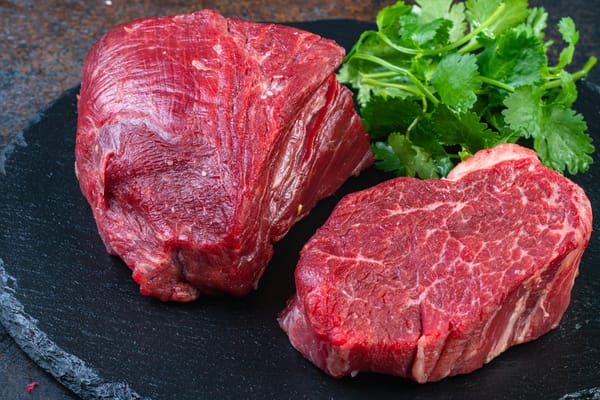I don't doubt you've already heard of the importance of vitamins for our proper nutrition and health. Even though vitamins are oftentimes associated with fruits and vegetables, they are generally found in higher amounts and bioavailability in meat (Chungchunlam and Moughan 2023, Descalzo et al. 2007, Malo and Wilson 2000).
Vitamins are used in every single one of our cells. They're used in energy production, synthesis of connective tissue, immune system, nervous function, and practically every process in our body (Alberts et al. 2015, Baltrusch 2021, Holwerda and Loon 2022, Mora et al. 2008, Puistola et al. 1980, Sales et al. 2022).
Given this, I think it's no leap of logic to say, it's important to get our vitamins.
There's not much debate about meat being a highly nutrient-dense source for protein, fat, minerals, and most vitamins. One or two vitamins, however, are oftentimes excluded from the club – namely, vitamin C and A.
To assuage this old myth, I want to direct your attention to the publication by Descalzo et al. (2007) and our previous article about vitamin C in meat. From both, I think you'll come to see it as we do. There's no vitamin missing from meat, with the possible exception of vitamin D (which isn't a problem, because we synthesise it ourselves with the help of sunlight).
And since vitamins generally have better bioavailability in the context of animal products, they're simply of higher value in meat. If you're still concerned, taking a full blood panel of all your vitamins might be recommendable, though potentially costly.
References
Alberts, B., Johnson, A., Lewis, J., Morgan, D., Raff, M., Roberts, K., and Walter, P. (2015). Proteins. In Molecular Biology of the Cell, (Garland Science, Taylor & Francis Group, LLC), pp. 109-172.
Baltrusch, S. (2021). The Role of Neurotropic B Vitamins in Nerve Regeneration. Biomed Res Int 2021, 9968228. 10.1155/2021/9968228.
Chungchunlam, S.M.S., and Moughan, P.J. (2023) Comparative bioavailability of vitamins in human foods sourced from animals and plants. Critical Reviews in Food Science and Nutrition, 1-36. 10.1080/10408398.2023.2241541.
Descalzo, A.M., Rossetti, L., Grigioni, G., Irurueta, M., Sancho, A.M., Carrete, J., and Pensel, N.A. (2007). Antioxidant status and odour profile in fresh beef from pasture or grain-fed cattle. Meat Science 75, 299-307. 10.1016/j.meatsci.2006.07.015.
Holwerda, A.M., and van Loon, L.J.C. (2022). The impact of collagen protein ingestion on musculoskeletal connective tissue remodeling: a narrative review. Nutrition Reviews 80, 1497-1514. 10.1093/nutrit/nuab083.
Malo, C., and Wilson, J.X. (2000). Glucose Modulates Vitamin C Transport in Adult Human Small Intestinal Brush Border Membrane Vesicles. The Journal of Nutrition 130, 63-69. 10.1093/jn/130.1.63.
Mora, J.R., Iwata, M., and von Andrian, U.H. (2008). Vitamin effects on the immune system: vitamins A and D take centre stage. Nature Reviews Immunology 8, 685-698. 10.1038/nri2378.
Puistola, U., Turpeenniemi-Hujanen, T.M., Myllylä, R., and Kivirikko, K.I. (1980). Studies on the lysyl hydroxylase reaction. II. Inhibition kinetics and the reaction mechanism. Biochimica et Biophysica Acta (BBA) - Enzymology 611, 51-60.
Salles, J., Chanet, A., Guillet, C., Vaes, A.M.M., Brouwer-Brolsma, E.M., Rocher, C., Giraudet, C., Patrac, V., Meugnier, E., Montaurier, C., et al. (2022). Vitamin D status modulates mitochondrial oxidative capacities in skeletal muscle: role in sarcopenia. Communications Biology 5, 1288. 10.1038/s42003-022-04246-3.










